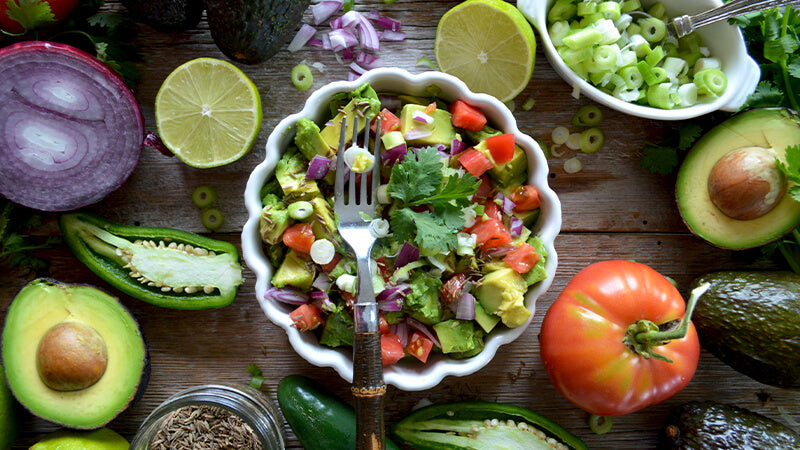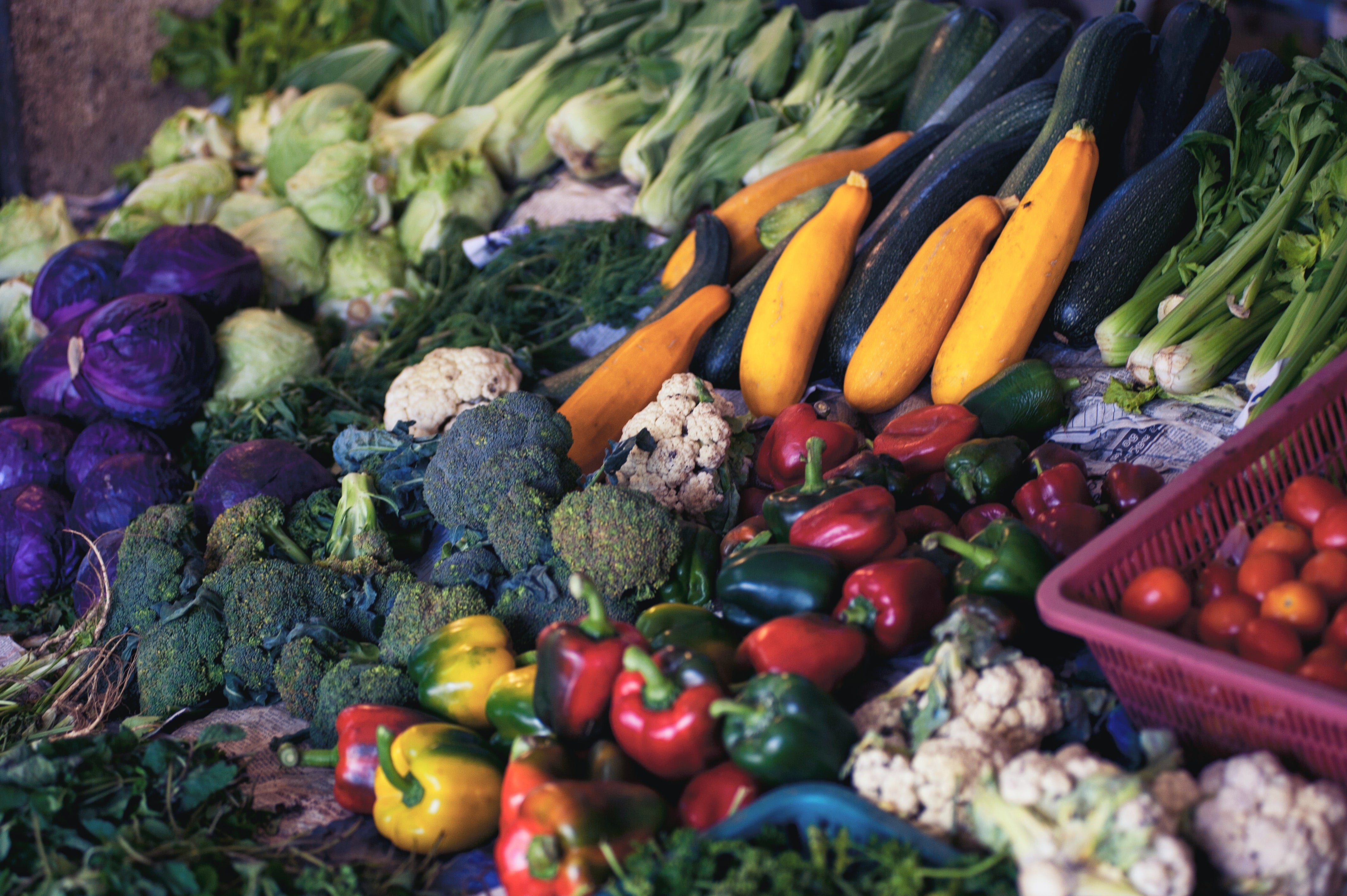You’ve probably heard about the ketogenic diet from friends or family, or at a minimum have heard it referenced in weight-loss and nutritional guides. The gist of the keto diet is to cut carb consumption, supplementing healthy fats as your body’s main source of fuel. A few popular claims surrounding this dietary change are improved health, significant weight loss, and potential benefits for those with diabetes, epilepsy, and Alzheimer’s.
Are you wondering whether the Keto Diet might be effective for you? If so, we’ve got ten helpful tips for you to consider!
1. Preparation
Your first question might be: What exactly is keto? Keto is a low-carb, high-fat diet. To prepare, stock up on healthy fats and eliminate carb products. Examples of healthy fats are foods that contain Omega 3s, such as olive oil, salmon, avocados, and walnuts. Leafy green vegetables are also your friend (kale, spinach, and broccoli).
Avoid wheat-based foods (bread, pasta, etc.), as well as sugary and processed foods, fruit, starches, and unhealthy fats.

2. What About Protein?
Your protein consumption on the keto diet should be low to moderate – typically around 35% of your daily diet – while your primary food group will be fats. It’s important to continue with adequate protein consumption for muscle maintenance.
A few high-quality protein sources you can incorporate into your diet include lean meat, eggs, organic peanut butter, and oily fish.
3. After Starting Keto: the “Keto Flu”
As your body adjusts to this major dietary change, expect a few side effects. Previously, carbs were your major fuel source – now, your body runs on fats. As a result, you’ll likely experience a period of some discomfort, otherwise known as the “keto flu” – almost a detox from the high-carb consumption your body is used to.
While you may experience some unpleasant symptoms, such as fatigue or mental fogginess, this adjustment period should pass pretty quickly. Drink plenty of water, ensure adequate sodium, potassium, and magnesium consumption, and even eat more fat to push through this “pain point.”
You may not experience these side effects after implementing the keto diet, but you’ll at least know what to expect if you do!
4. Smelly Breath
One common side effect of the keto diet is smelly breath, which may take on a bit of a fruity scent. This change is attributed to heightened ketone levels in your body – namely, acetone, which escapes through your urine and breath.
This is actually a positive sign that your diet is working. If you’re concerned that your breath is too noticeable, simply keep mints or sugar-free gum handy.
5. Exercising
One benefit of the keto diet is improved energy, which may boost the quality of your workouts. However, high-intensity workouts may be more difficult to perform, as they are largely powered by carbohydrates.
When your body enters a state of ketosis and transfers its fuel source to fats (which aren’t as easy to burn as carbs are), it becomes difficult to perform high-intensity workouts. However, low-intensity workout regimens shouldn’t be affected – if anything, take note of whether you become lightheaded or dizzy, and tweak your workout accordingly.

6. When Will I See Results?
While timing of results will vary among dieters, the first few weeks are usually a period of adaptation. It may take up to three months to really see the effects of the keto diet, but may be noticeable in as little as thirty days. Your first big change will be felt, not seen, and eventually, you’ll also shed some weight.
There is no promised number of pounds that you’re guaranteed to lose on the keto diet, as this will depend largely upon your starting weight, metabolic rate, and more – but you will see results by restricting your diet to the foods that keto permits.
7. When Keto Might Not Be Right for You
If you have any of the following pre-existing medical conditions, you may want to rethink the keto diet, or at a minimum, confirm with your doctor that it’s safe to try:
- High blood pressure;
- High blood sugar;
- GI issues.
Don’t attempt the keto diet during pregnancy, as it can negatively impact growing babies, or if you’re taking insulin.
Additionally, listen to your body. You may be responding negatively if you feel constantly nauseated, lightheaded, and low on energy. These are not normal side effects after your body adapts to the diet, and if you experience them after several weeks, you should reconsider keto.
8. How Long Should I Stay on the Keto Diet?
Some doctors say that keto is OK as a long-term diet, while others don't recommend making it a permanent lifestyle change. Always check with your doctor or dietitian if you have any questions about what's best for your health.

If you've decided to end your keto journey, it's time to begin transitioning off the diet. A good way to do this is by refraining from overdoing carbs – incorporate healthy carbohydrates slowly into portion-controlled meals. This will reduce the likelihood of blood-sugar spikes and crashes.
Expect to feel a little hungrier throughout the day, as well, as carbs are digested more quickly than fats. You might also gain some water weight as your body readjusts – a common effect of going off the keto diet.
9. How to Maintain Your Keto Results
You will likely experience a period of trial and error as you try to maintain the results you’ve achieved on the keto diet, and that’s OK! The important thing is not to overdo your carb consumption, and be mindful about incorporating healthy protein into each meal. Protein will ensure you’re satiated enough after eating that you’re not tempted to binge, which will override your results.
10. Long-Term Benefits of Keto
While the keto diet may not be permanent for you, a few takeaways that will be helpful moving forward with a healthier diet are:
- Less sugar consumption;
- Fewer carbs (and processed foods);
- More protein and healthy fats.
Maintaining these dietary conditions will require a similar effort to practicing keto, but now that you’re used to more severe restrictions, it will be easier for you to continue with these healthy habits after you’ve abandoned the diet.
Best of luck to you!







Leave a comment
All comments are moderated before being published.
This site is protected by hCaptcha and the hCaptcha Privacy Policy and Terms of Service apply.